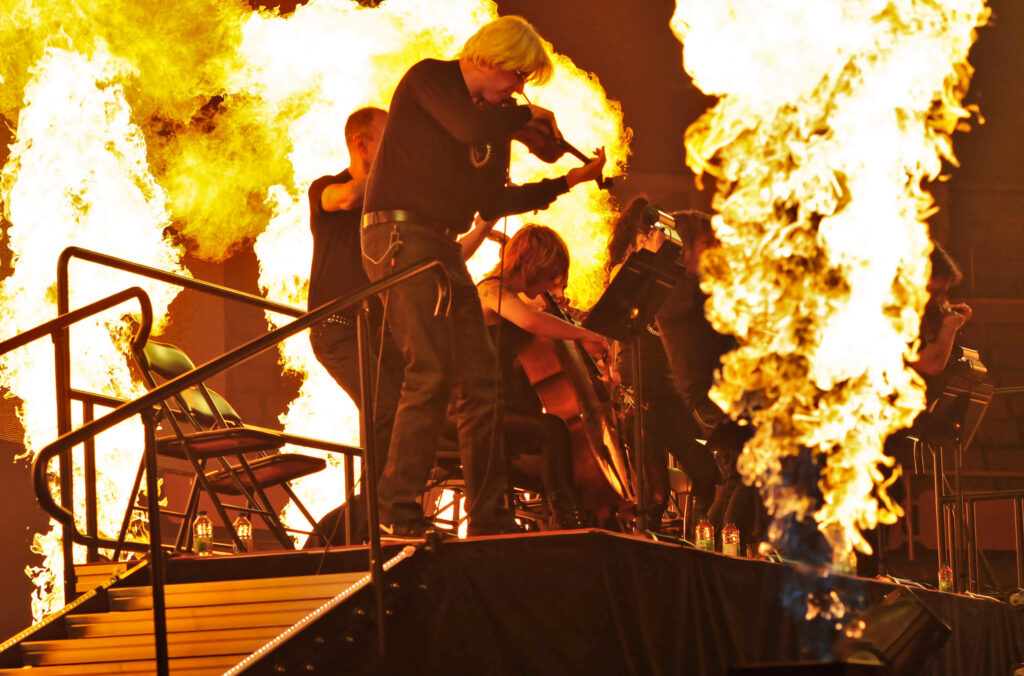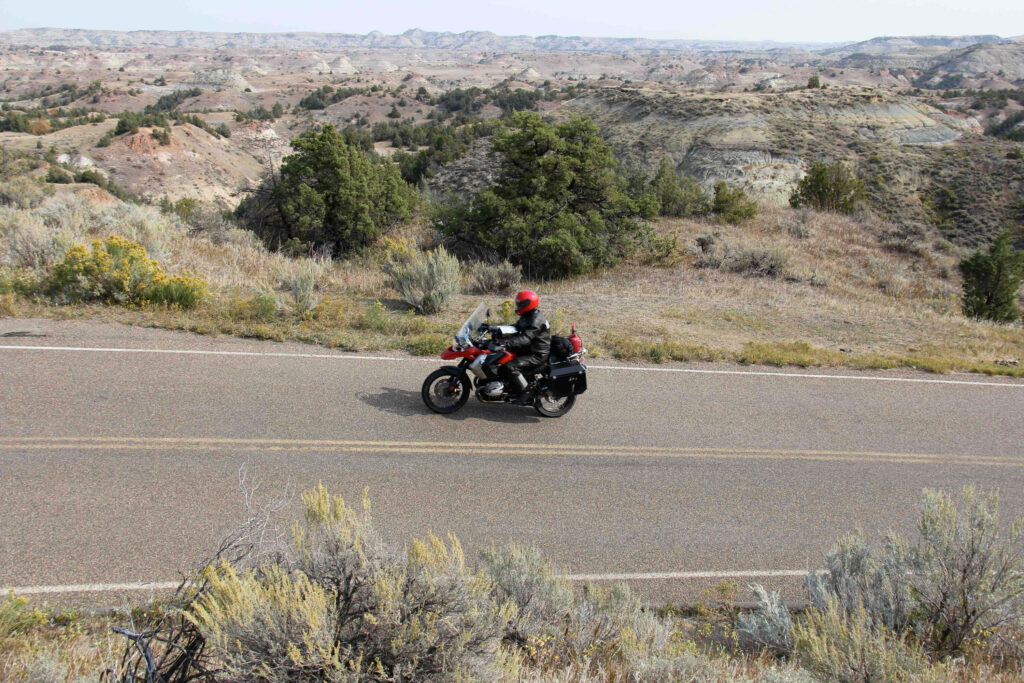
Photo by Michael Mosbach
The theme of great beauty hiding terrible ugliness brings us, at last, all the way back to Western North Dakota, and Theodore Roosevelt National Park. Winding toward that segue, we also carry along some other themes, like a traveler’s natural wonder about what is really best for the world around him.
This one’s a tough nut — people will have to judge for themselves.
Clues appeared as Michael and I rode west from Bismarck, beginning our day off with something over a hundred miles on Interstate 94. (A necessary sacrifice to get us to Theodore Roosevelt National Park, where I could collect a new passport stamp — all meaningless to Michael — and get us close enough to the next show in Winnipeg to make it on the show day.) On that bright, chilly morning, we passed many semis carrying unusual loads — clearly marked modules of oil wells, for example, portable construction offices, and long, wide structures of unidentifiable hardware.
It was when we left the park that things became bad. I had looped through Eastern North Dakota on a previous tour, and thought I knew what the state was like. Wheat and ranchland dotted with bird-friendly wetlands, occasional small towns with water towers and cottonwoods, and many abandoned farmhouses (describing those at the time as the “state symbol”). This time, highlighting my route from the national park up toward Minot for the night had seemed easy — long straight backroads north through the Fort Berthold Indian Reservation (another fascinating history), a couple of small dots and town names among the likely wheat and ranchland, then over the Little Missouri River and a casual northeast zigzag.
The reality was harshly different.
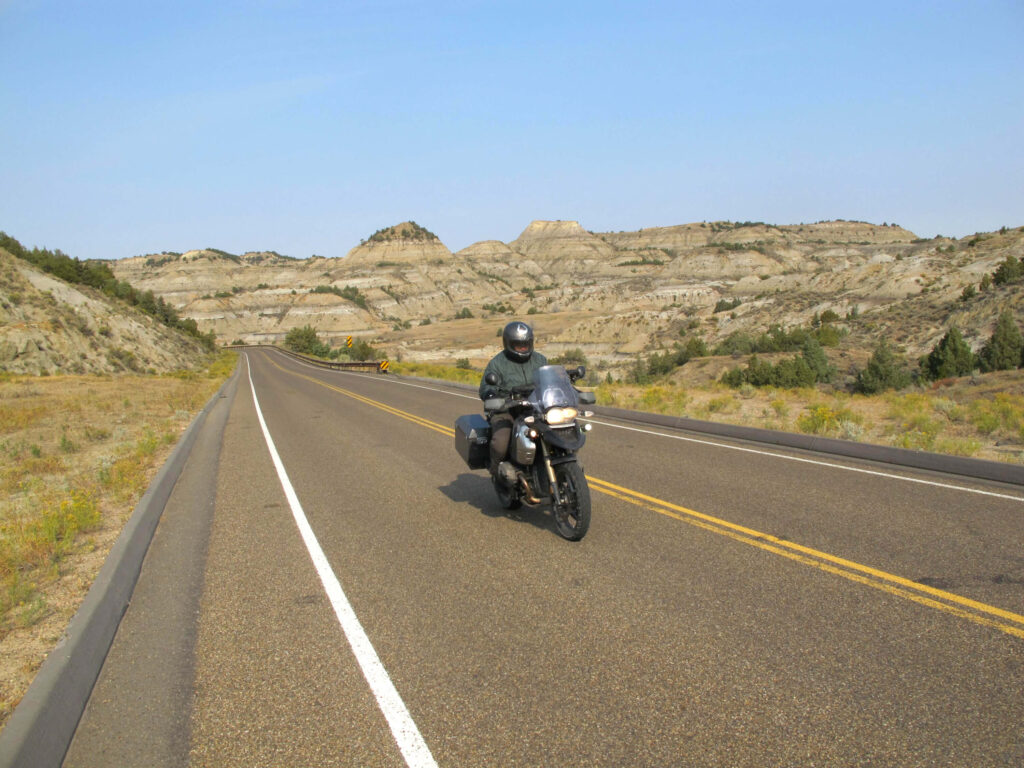
Backtracking a few miles east on the interstate, we turned north on little Highway 85, and were immediately surrounded by trucks. Looming ahead of us, and thundering toward us, were road construction vehicles, side-loading semi dump trucks, and dozens of tankers — not the shiny mirror ones you see on the interstate, but crude, trellis frames around muddy gray iron cylinders.
I had routed us through Killdeer, thinking it looked big enough on the map that it should have a gas station, and because it is named after a bird I like (a grasslands plover that fakes a broken wing and distress call — its namesake “kill-deer, kill-deer” — to lead predators away from its nest). At its crossroads we approached a scene of raw devastation on a huge scale, a vast construction site of mud and gravel where the intersection was being enlarged from two lanes in each direction to what looked like it would be six. We had to weave through the muddy gravel and semis to the gas station, and through what used to be a typical prairie town. As we traveled north, the construction sites increased, and we were shunted on makeshift detours where miles of road were torn up and diverted onto dirt and gravel lanes. If it had been raining, we would have been in big trouble on a surface like that (as I knew from experience on such “roads” in the Arctic when it rained). In one case, a long stretch of highway was simply barricaded off while they blasted and widened it, sending us about a hundred miles out of our way. Anywhere else in America, that would never stand. (My paper map still showed that road as a dotted-line “scenic route,” so I knew whatever was going on around there, it had changed fast.)
Encampments at the roadside were scattered with hundreds of small travel-trailers, dormitories for the workers and drivers, and water was being pumped out of roadside sloughs to fill the tankers that sprinkle the detours to keep the dust down. Ranchers and farmers posted homemade signs offering patches of open land for truck parking. I couldn’t figure out what was going on around us, but I thought, “Whatever it is, it’s awful.”
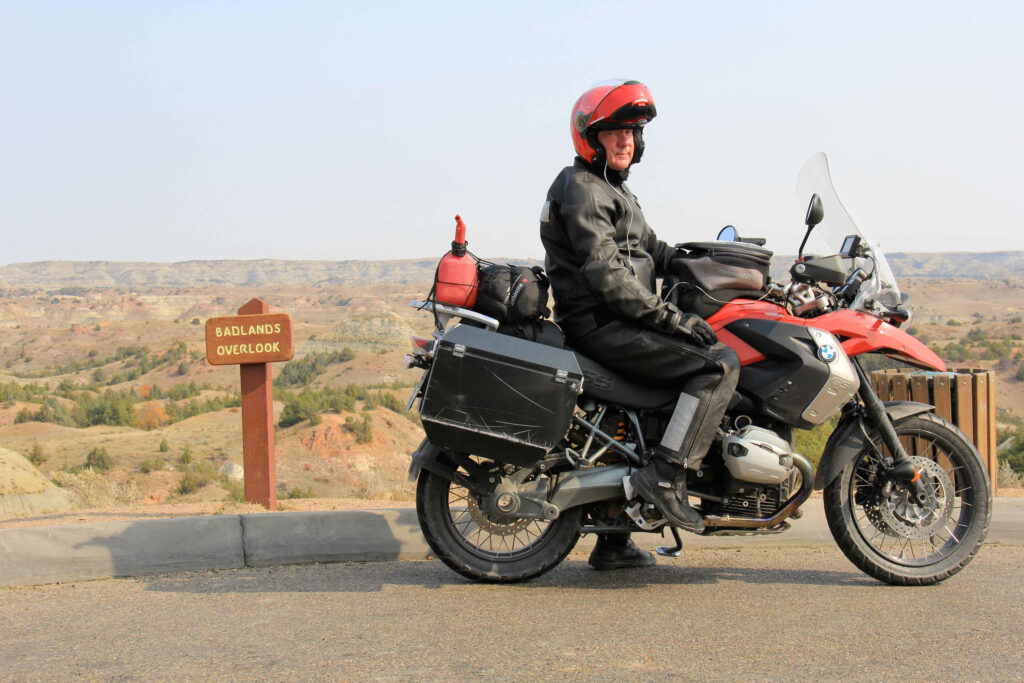
Photo by Michael Mosbach
All of that construction and traffic slowed us down a lot, as did the long detour, and it was late in the day before we reached Minot. We almost never have trouble finding rooms in whatever little town we roll into, and I had explored Minot’s meager offerings before, and knew the Holiday Inn was about the best to be had. But as we rode past the fairgrounds and saw parking lots full of trucks and RVs, and the hotel parking lot jammed with pickups, I began to worry.
Sure enough, it was state fair time, and not a room to be had in the whole town.
Remarkably, there was no grumbling — we just faced our fates, fueled up and kept riding, another hour east to Rugby, North Dakota. Rugby bills itself as “The Geographical Center of North America,” and on that theme, we had The Hub motel (big metal sign showing a map of North America with a starred dot in the middle) and an attached restaurant. After an eleven-hour day and almost 500 miles, we would not begrudge its basic comforts.
Nor would there be any complaining the next morning, when we rose early, scraped the frost off our saddles (it was exactly freezing — 0° C.), and rode another 300 miles to Winnipeg. Michael was really having fun now, and said, “Why is it that when I’m traveling with you, I’m always either sweltering or shivering?”
I said, “Because you always have the wrong clothes!”
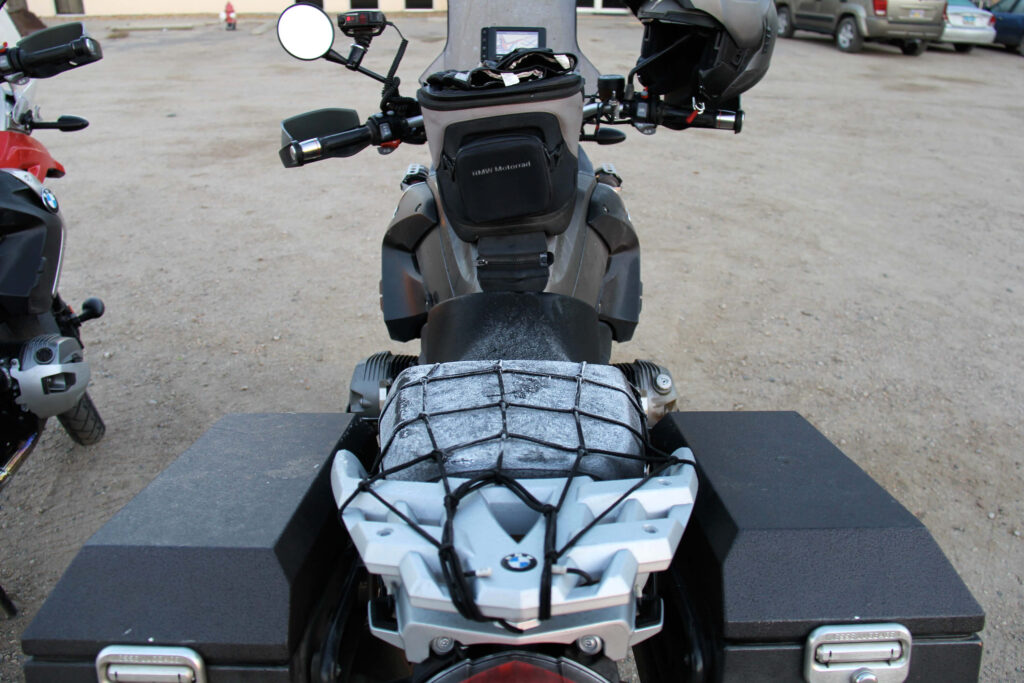
But that evening in Rugby, after a simple dinner at the Hub of North America (once again, with a wine list of soda pops), I leafed through the newsletter we had been given at the national park. There I found the answer to “awful,” under the headline, “What’s going on around here?!”
“Surprised by the amount of truck traffic in the area? Unable to get a hotel reservation? Can’t find the sleepy cowboy towns you remember? The reason for the incredible changes this area is experiencing lies two miles below the surface of western North Dakota — a formation called the Bakken. The Bakken formation is a rock layer rich with oil reserves. Until recently, the oil was not extractable. A new and controversial technique — hydraulic fracturing or “fracking” — has allowed oil companies to more than quadruple their daily oil production in the last five years. The huge influx of activity has brought tens of thousands of new jobs to the area. In a national economy where jobs are scarce, North Dakota has become the “land of opportunity” for many.
All three North Dakota National Parks are experiencing serious issues due to the oil boom. New wells are going in every month; many can be seen from inside park boundaries. Each new well means another drill rig, well pad, pumpjack, debris pit, flare pit, storage tanks, and access road on the landscape. Each new well requires 2,000 “trucking events” to complete its setup and to begin pumping oil. Noise and dust from heavy truck traffic and pumping equipment is constant. Numerous flares can be seen in the formerly dark night sky as excess natural gas is burned off. Socioeconomic impacts are altering local communities. A multifaceted topic to be sure, the oil boom begs a difficult question: how can we develop our resources while still protecting our parks and communities?”
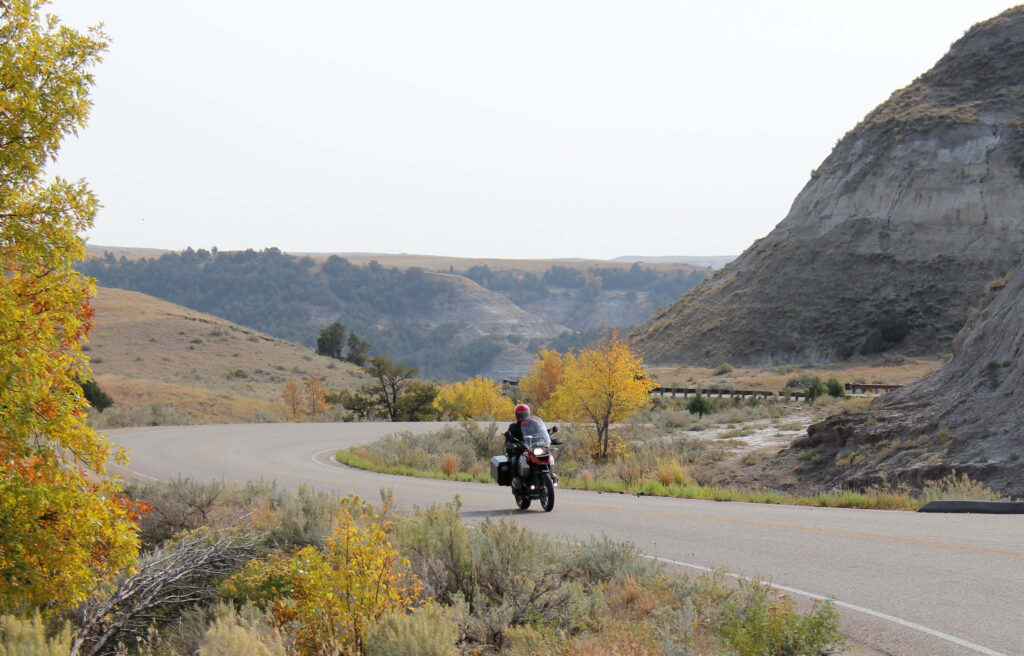
Photo by Michael Mosbach
That is another very even-handed appraisal, it seems to me, for a national park publication. And the question they raise about balancing development and protection is “difficult” indeed. This oil boom in Western North Dakota has only been underway for about three years, and the pace of it is frenetic, rapacious. The only such careless extraction of resources regardless of consequences I have witnessed are in Northern Canada, China, and West Africa. The only such devastation disguised as road construction I have witnessed is in the Arctic, and in Argentina. These are not good examples.
Now, having learned a fair amount about what’s going on “Deep in West Dakota,” especially first-hand accounts from people living and working there, I am fairly horrified — but trying very hard not to go off into an environmental rant. In the spirit of “Don’t be afraid to see what you see,” though, and wanting to share it, for the above article to say that extracting fossil fuels by hydraulic fracturing, or fracking, is “controversial” is wildly diplomatic. (And that must be a unique oxymoron.) Groundwater is poisoned, often permanently, farmland is destroyed, often for decades, by leaks of the poisonous “brine” used in the process (and, unbelievably, the oil companies alone are responsible for reporting their own spills, with almost no oversight). Surface water from the prairie wetlands that serve as migration oases for millions of birds is pumped away to dampen the dusty roads. Tens of thousands of workers — not to mention tens of thousands of semis — have a far-reaching effect on the environment. Just for one small example, those encampments of house trailers — where does their sewage go?
So it’s a big mess.
My first response was accurate, “Whatever it is, it’s awful.”
And yet . . . in a few brief years North Dakota has shot from being a state in population decline, in a time of economic recession, to having the lowest unemployment rate in the United States, workers flocking in from everywhere, and a billion-dollar state surplus. All of a sudden, North Dakota is the second-largest oil producer in the United States, after Texas. This is indeed a boom.
One can easily parrot the justification — “To reduce our dependence on foreign oil,” and if we add another hot political keyword, “Jobs,” the sum of that equation is “Votes.”
It adds up to the same equation that strips the mountaintops of West Virginia for coal (I saw the same thing happening on a remote backroad in Alberta, just west of Edmonton), and — indeed — that keeps the coal industry going at all. But I’ve ranted about that before. This is about what is happening two miles deep in West Dakota.
And the thing is, in all of these places, I want people to have jobs. But not these dirty, nasty jobs, and a life that answers the dark premonitions of Thomas Hobbes (a frequent reference in The Better Angels of Our Nature).
“No arts; no letters; no society; and which is worst of all, continual fear, and danger of violent death: and the life of man, solitary, poor, nasty, brutish and short.”
That surely describes how life can be in coal towns and oilfields, and I don’t wish an existence like that for anyone. Even if it will “reduce our dependence on foreign oil,” and produce jobs. Or votes.

Photo by Michael Mosbach
A further metaphor about “roads no one travels unless they live on them” says something about integrity. The roads I travel are the ones I live on — in every sense. In the largest abstraction, the work I do and the way I live has to reflect that direct engagement with the world around me.
Not everyone lives on the roads they travel — especially, say, politicians and financiers. They talk the necessary talk to get the votes or the deals, and console themselves that they are doing the right thing, and the lies are just a means. So they aren’t riding that road — but they don’t care. The rest of us should.
Perhaps the saddest roads in America are the ones that people used to live on, but don’t anymore. Some stretches of Old 66, little towns in the Midwest whose Main Street stores are boarded up, with maybe a few optimistically repurposed as antique shops or local museums (in a formulation I have expressed before, the closed shops, restaurants, and gas stations represent the death of someone’s dream), and — aptly — the abandoned farmhouses of North Dakota. Places where people don’t live anymore.
For myself, I plan to keep exploring these roads and seeing what I see.
And I plan to keep making Michael’s life as much of a living hell as I can.
Because he knows what the billboard preaches: “HELL IS REAL.”
Oh yes.
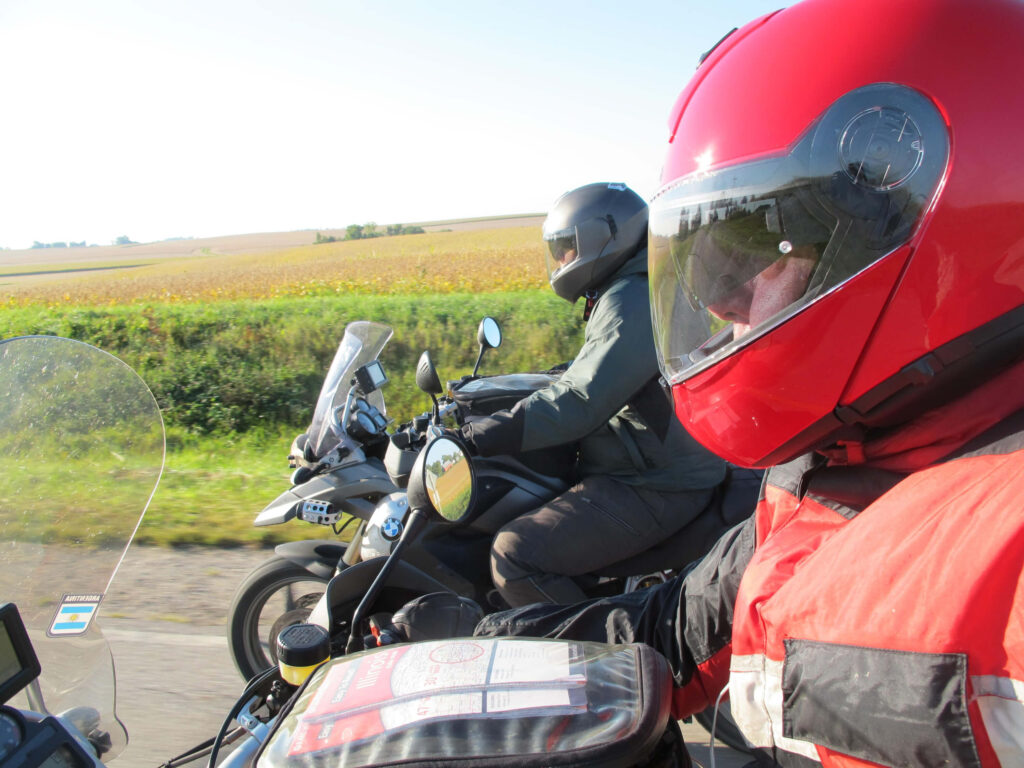
My journal notes from the first few days of this tour mention the idea of the “rolling stage.” In our professional life, arenas sometimes have a portable stage on wheels, and at the beginning of the day it is positioned toward the center of the “rink.” Thus the overhead work on P.A., lights, and video screens can go on while our band crew assembles the instruments on the rolling stage, away from that aerial activity. Once the overhead stuff is ready, the stage is pushed into place, at the end of the rink under the lights, by a team of stagehands. (Drum tech Gump very much appreciates those stages, as he has more time to put up the kit than if our band crew doesn’t get onstage until the overhead stuff is done.)
A rolling stage also stands as a decent metaphor for a concert tour, and, stretched a little farther, for what Michael and I (and sometimes Brutus) do.
From the interior vantage point, onstage or on the bike, I am performing — “operating the machine.” Mind and body are fully engaged in the mechanics and art of executing, adapting, and being as smooth and accurate as I can. But at the same time, I am observing the “rolling stage” in front of me — whether a pageant of scenery or an appreciative audience.
Just before band rehearsals I wrote a piece for Drum Workshop’s Edge magazine about my long preparations, physically and musically, and each of us brought that dedication to the rehearsal hall from the beginning. Over the course of many months, we built up the most musically adventurous and visually “active” show we have ever presented. Deciding to do two different shows on alternate nights, with a number of songs changing, and even a few “one-off” songs for special occasions, has been uplifting for us.

Photo by Craig M. Renwick
Perhaps most uplifting of all has been adding “guest musicians” to our show for the first time in our lengthy career. Having the Clockwork Angels String Ensemble join us makes the second set really special. The eight string players were chosen by arranger David Campbell, who wrote the scores for the Clockwork Angels album as well as for a number of older songs in the set.
The string arrangement for “YYZ” was an afterthought. That instrumental was originally planned to be played as a trio, after we said “A Farewell to Strings.” But when we noticed that it began with Geddy playing string samples on his foot pedals, after the real thing, it just seemed wrong. David wrote an arrangement for the strings to accompany us, and that song came to represent the climax of the show, I think — at least on our side of the barricade.
I am not able to watch the string players perform, as they are on a riser behind me, and I can’t listen to them much. (Needing to lay down a strong foundation for all those players, as in a big band, I have to concentrate on the accuracy and smoothness of my own part.) But I can certainly feel the energy they bring to their performance, add to our show, and contribute to the interplay my more mobile bandmates are able to have with them.
As my young (well, mid-thirties) nephew Sean said about an early show, “Those string players sound amazing — and they rock!”
On both my rolling stages, it is good to feel that we are exploring new territory, with unflinching determination, youthful energy, and great satisfaction in doing it.
And even with this story’s prodigious length, I am skipping so many wonderful images and tempting stories from our 7,000 miles of motorcycling — the Lafayette Hotel in Marietta, Ohio; riding the Ozarks with Tom Marinelli, or the backroads of Saskatchewan and Alberta with Brutus — and how each of the twelve shows kept getting better and more energized as we went.
But at this late hour, I must sacrifice the perfect for the good, because soon enough my stages will be rolling again. There will be more stories and more photos, as I lead Michael on the never-ending roller-coaster ride to hell.
He knows, and Brutus knows, and the Clockwork Angels String Ensemble is beginning to learn — everybody behind me is going to burn.
Oh yes . . .
